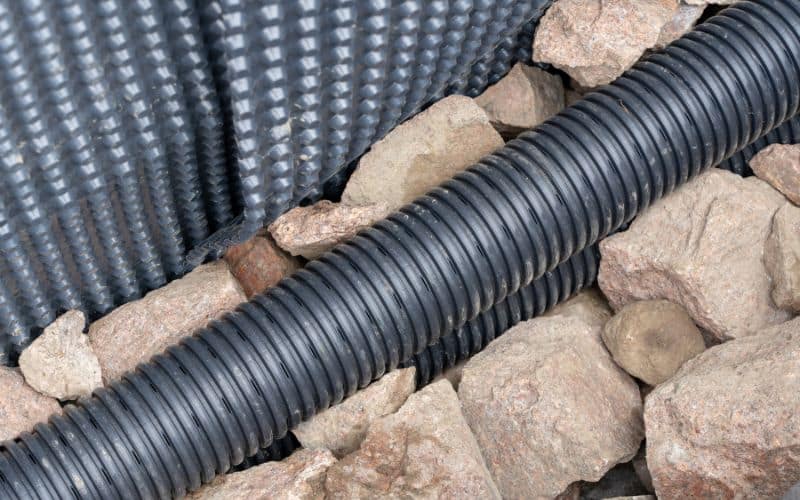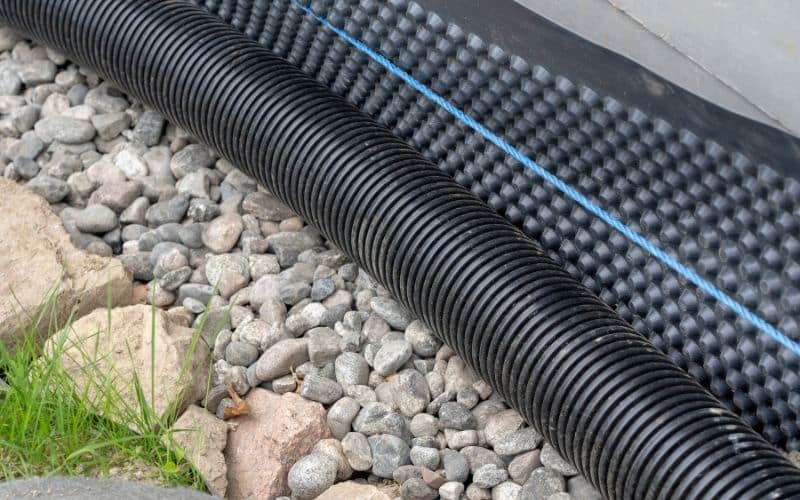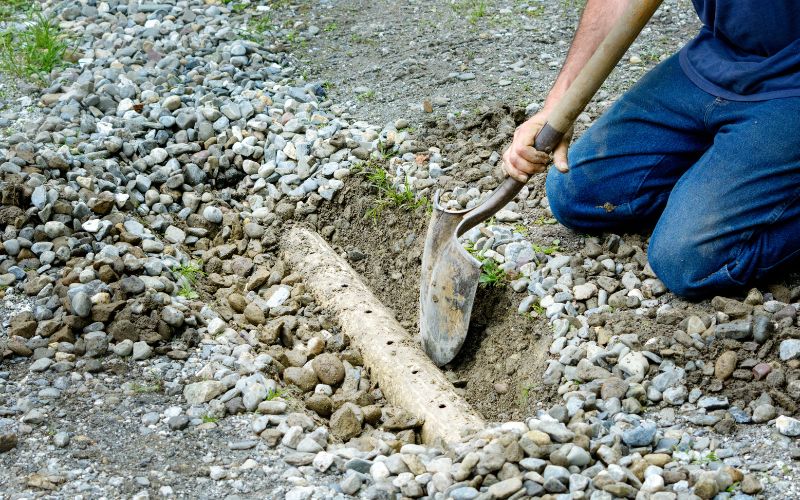
Why Install a French Drain?
Water pooling in your yard? Basement feeling a bit damp? A French drain might be your saving grace. This drainage system is designed to channel and redirect excess water away from areas prone to water accumulation. But before you grab your shovel, let’s explore the ins and outs of installing a French drain.
What is a French Drain and How Does it Work?
Think of a French drain as your yard’s personal waterway, designed to channel excess water where you want it to go. At its core, a French drain is a strategically dug trench, filled with gravel and a specialized, perforated pipe. This pipe is often crafted from durable PVC and features small openings that invite water in. But it’s not just a holey pipe buried in the dirt; it’s a carefully engineered system. The gravel serves a dual purpose: it not only prevents the pipe from clogging with debris but also aids in directing the water flow into the pipe. So, when rainwater or runoff comes knocking, your French drain is ready to guide it safely away.
Where Should You Install a French Drain in Your Yard?
Choosing the right location for your French drain is like finding the perfect home—it needs to fit your landscape’s unique needs. While the general idea is to place the drain where water tends to gather, the specifics can vary. For instance, if you have a pool that tends to overflow, installing a French drain nearby can help manage the excess water. Similarly, if you have a garden that turns into a mini-swamp with every rainfall, a French drain could be its saving grace. The key is to assess your yard’s drainage patterns and identify the areas most in need of water redirection. Once you’ve pinpointed these zones, you’re well on your way to a drier, happier outdoor space.

How Deep Should Your French Drain Trench Be?
When it comes to the depth of your French drain trench, one size doesn’t fit all. The depth you’ll need is influenced by a variety of factors, from the type of soil in your yard to the volume of water you’re dealing with. While a shallow trench might suffice for minor water issues, you’ll want to dig deeper for more substantial drainage challenges. As a rule of thumb, aim for a trench that’s a minimum of 18 inches deep. This depth is generally effective for guiding water away from trouble spots and ensuring it has a clear path to flow. So, before you break ground, take a moment to evaluate your yard’s specific needs. That way, you’ll dig a trench that’s not just deep, but deep enough to do the job right.
What Slope is Ideal for a French Drain System?
The slope of your French drain system is crucial for effective drainage. A slope of at least 1% is recommended to keep water flowing away from problem areas. To achieve this, you’ll need to dig the trench at a slight angle.
Choosing the Right Drain Pipe for Your French Drain
When it comes to selecting a pipe for your French drain, opt for a perforated pipe that allows water to enter while keeping debris out. The diameter of the drain pipe should be large enough to handle the water flow but not so large that it becomes cumbersome to install.

The Role of Gravel in Your French Drain Installation
Gravel isn’t just a bunch of rocks; it’s the unsung hero of your French drain system. This humble material does more than just fill space; it acts as a natural filter and a director of water flow. Start by laying a generous layer of gravel at the trench’s base before you even think about placing your perforated pipe. This foundational layer serves as a buffer, ensuring that your pipe doesn’t get clogged with soil or debris. Once your pipe is in place, go ahead and shower it with another layer of gravel. This top layer works in concert with the pipe’s perforations, guiding water seamlessly into the system.
How to Line the Trench for Optimal Drainage?
To prevent soil from mixing with the gravel and causing clogs, it’s advisable to line the trench with landscape fabric. This fabric acts as a barrier, ensuring that your French drain remains effective over time.
Common French Drain Mistakes to Avoid
When you install a French drain, avoid these common mistakes:
- Insufficient Slope: A flat drain system won’t effectively move water away.
- Wrong Pipe: Using a non-perforated pipe will defeat the purpose of a French drain.
- Skimping on Gravel: Inadequate gravel can lead to clogs and poor drainage.
What is the Cost of Installing a French Drain?
The cost to install a French drain can vary based on factors like the length of the drain pipe, the type of gravel used, and labor costs. However, investing in a well-designed drainage system now can save you from costly water damage later.
How to Connect Your French Drain to a Municipal Storm Drain?
Got a municipal storm drain nearby? Lucky you! Connecting your French drain to this larger drainage system can supercharge your water removal efforts. But before you start dreaming of a flood-free future, there’s some homework to do. Local bylaws often have specific guidelines about connecting to public drainage systems, and you’ll likely need a permit to make it official.

Conclusion: Keep Water Flow Smooth and Basements Dry
Installing a French drain is an effective way to manage excess water and prevent water damage to your property. From choosing the right pipe and gravel to understanding the importance of slope and trench depth, each step is crucial for a successful French drain installation. So, the next time you find yourself ankle-deep in a waterlogged yard, remember: a well-installed French drain could be the solution you’ve been searching for.








